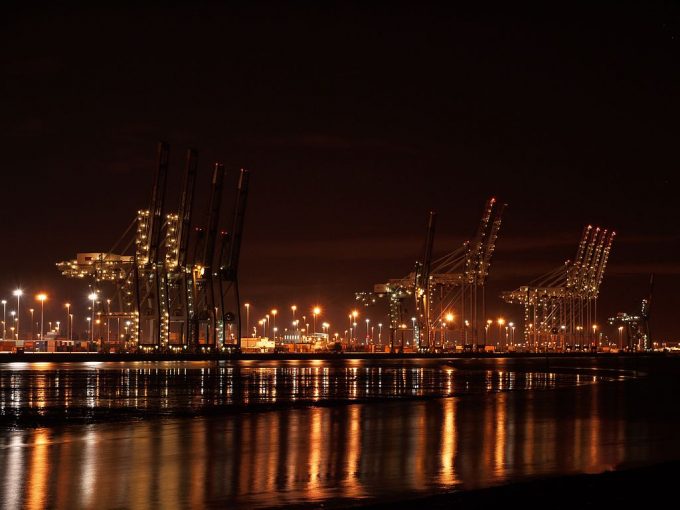Container spot rates have peaked as all major trades see prices fall
There was more evidence in this week’s container port freight markets that peak prices on ...
TFII: SOLID AS USUALMAERSK: WEAKENINGF: FALLING OFF A CLIFFAAPL: 'BOTTLENECK IN MAINLAND CHINA'AAPL: CHINA TRENDSDHL: GROWTH CAPEXR: ANOTHER SOLID DELIVERYMFT: HERE COMES THE FALLDSV: LOOK AT SCHENKER PERFORMANCEUPS: A WAVE OF DOWNGRADES DSV: BARGAIN BINKNX: EARNINGS OUTODFL: RISING AND FALLING AND THEN RISING
TFII: SOLID AS USUALMAERSK: WEAKENINGF: FALLING OFF A CLIFFAAPL: 'BOTTLENECK IN MAINLAND CHINA'AAPL: CHINA TRENDSDHL: GROWTH CAPEXR: ANOTHER SOLID DELIVERYMFT: HERE COMES THE FALLDSV: LOOK AT SCHENKER PERFORMANCEUPS: A WAVE OF DOWNGRADES DSV: BARGAIN BINKNX: EARNINGS OUTODFL: RISING AND FALLING AND THEN RISING

As anticipated, container spot rates softened across the major deepsea trades following the Chinese New Year factory holiday.
The Shanghai Containerized Freight Index (SCFI) this week recorded spot rates from Asia to North Europe down 5.6%, to $906 per teu, as carriers scrambled to fill their ships following the break.
But the rate erosion could have been much worse without the 2M’s last-minute decision to blank the sailing of the 19,437 teu MSC Eloane on Maersk Line and MSC’s AE10/Swan loop this week.
While it is normal for spot rates decline in the aftermath of CNY, this year carriers are worried about the disappointing demand outlook.
According to the January edition of the Global Port Tracker for North Europe, there are also growing economic fears, with Italy already reporting two consecutive quarters of negative growth and Germany marginally avoiding recession.
Co-author of the Global Port Tracker Ben Hackett said: “We are not predicting a full-blown recession, rather that stagnation leading to a mild downturn is on the cards.”
He added: “Any thought of improving freight rates at this stage is optimistic to say the least.”
Spot rates for Mediterranean ports also lost ground, the SCFI component falling 4.4% to $920, although the route has proved to be more robust than North Europe over the past year.
And on the backhaul leg, the trade has been unable to recover from the impact of China’s clampdown last year on the import of waste paper and plastics. For example, it was estimated that the UK alone exported some 3m tonnes of cardboard waste a year to China.
Spot rates from Rotterdam to Shanghai, as recorded by Drewry’s World Container Index, are currently 33% lower than this time last year, at just $574 per 40ft.
In an effort to push rates up, Maersk has announced new FAK prices from Rotterdam of $600 per 40ft for March.
Meanwhile, the Asia-US west coast rate, according to the SCFI, suffered a significant 8% plunge, shedding $159 to $1,834 per 40ft. For east coast ports, the fall was less severe, at 2.8% to $2,968 per 40ft.
The transpacific tradelane is also having to adapt to the seasonal softer demand, combined with the ending of frontloading bookings to beat the US 25% duty on around 5,700 Chinese imports from 2 March.
And the weakening of spot rates on the route is bad news for carriers currently negotiating new annual contracts with BCOs due to run from May. Moreover, the IMO 2020 BAF surcharges proposals rolled out by the carriers are also inhibiting the negotiations.
George Griffiths, editor Global Container Freight Market at S&P Global Platts, told The Loadstar today: “Questions still remain, however, over the switch to low-sulphur fuel and how this will impact the market into Q4 and beyond, and this is hindering much of the discussion surrounding these annual contracts.”
The cumulative index of the SCFI this week dipped by 4.9% to 888.29, with all its sectors showing a decline in spot prices since the CNY.
Comment on this article